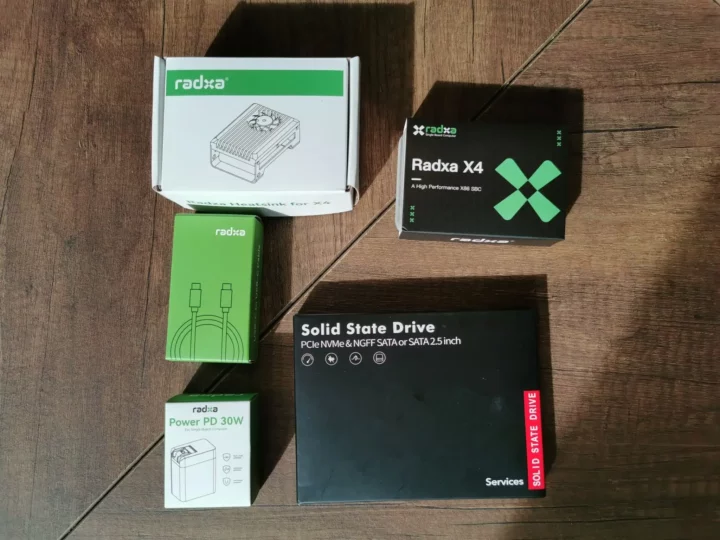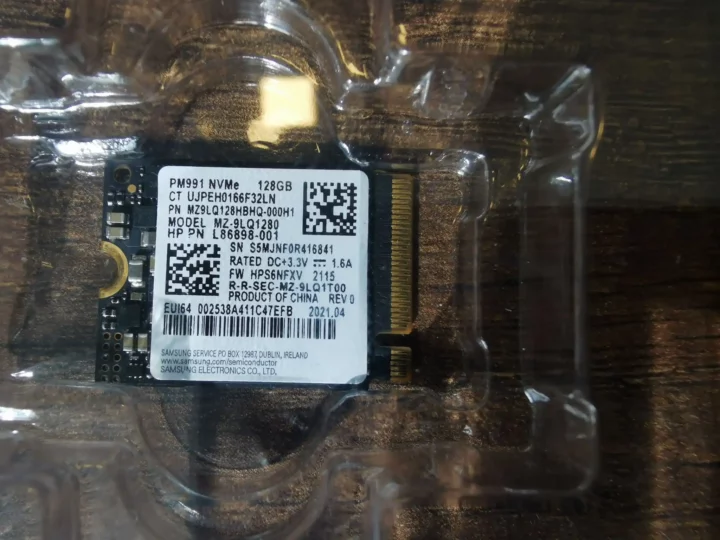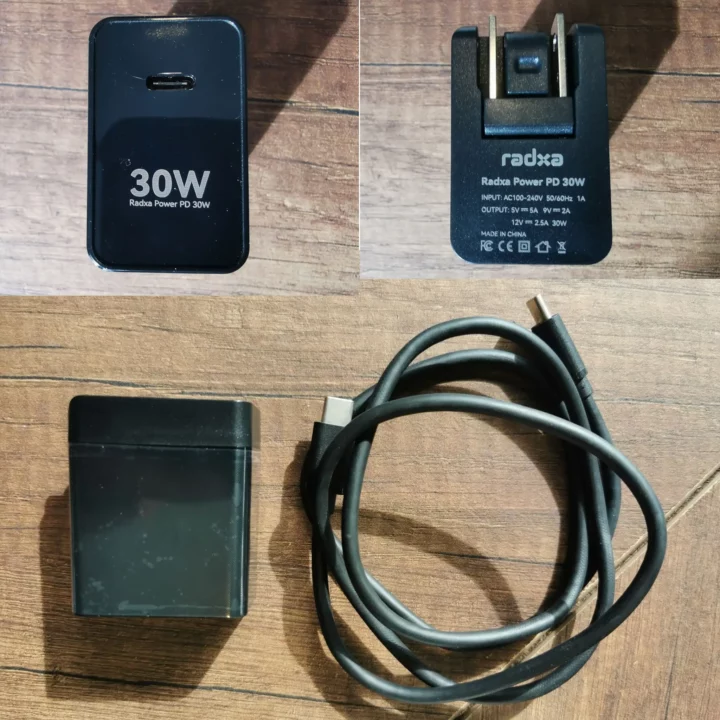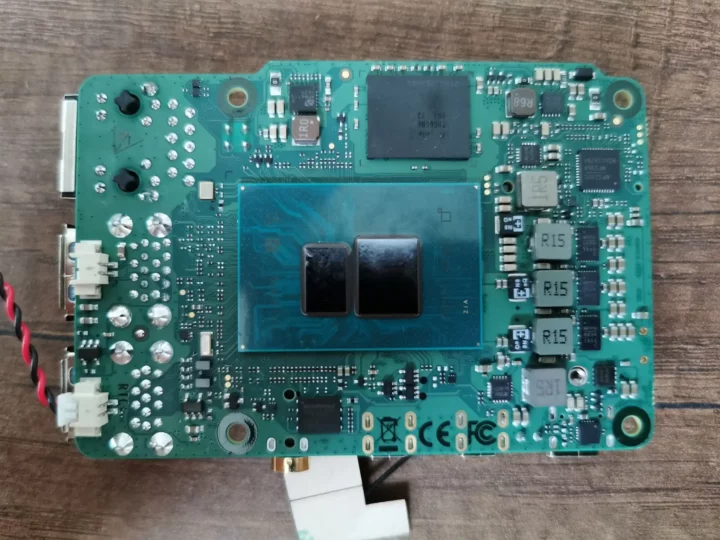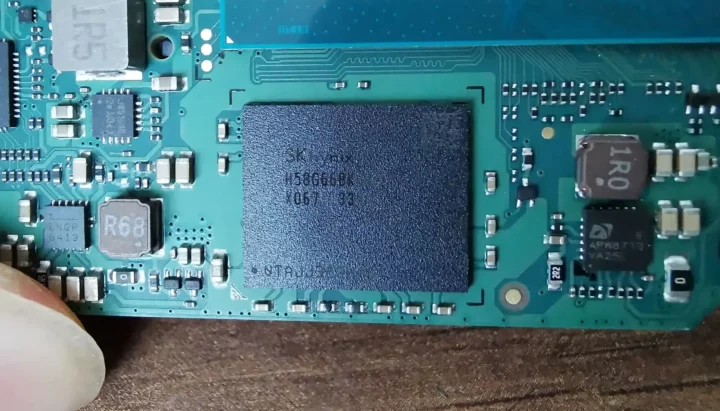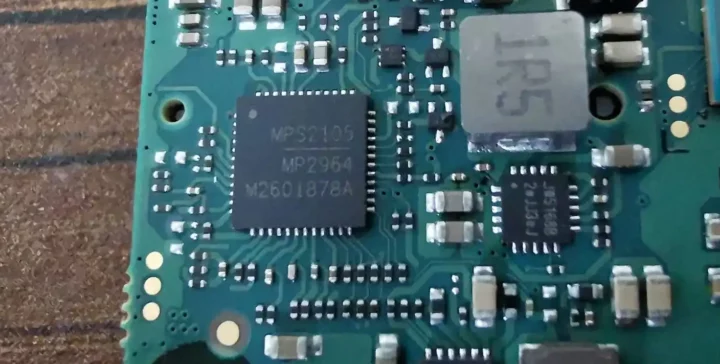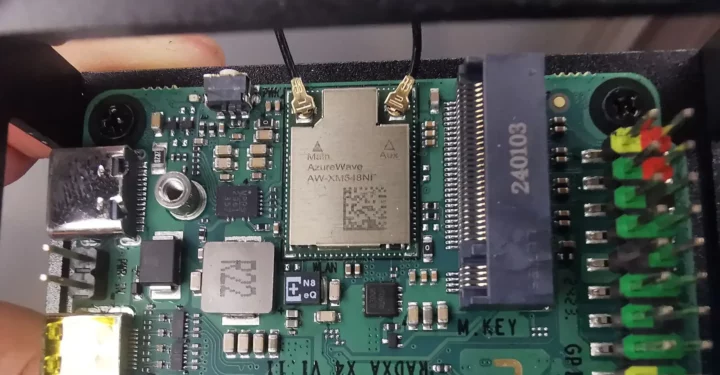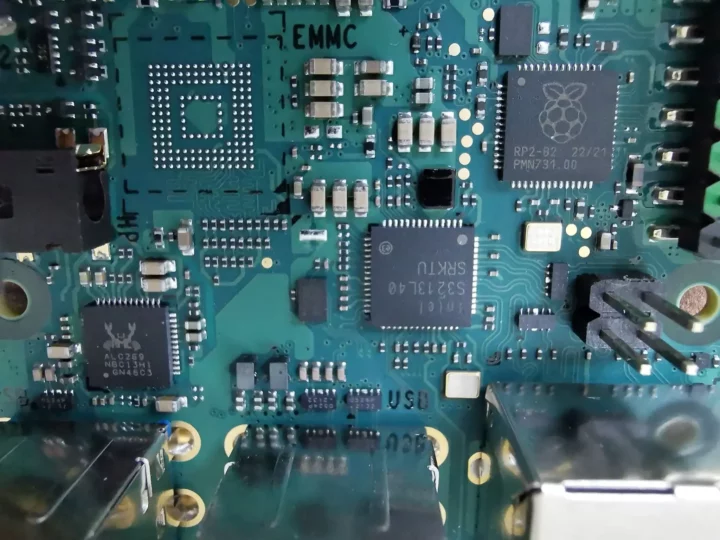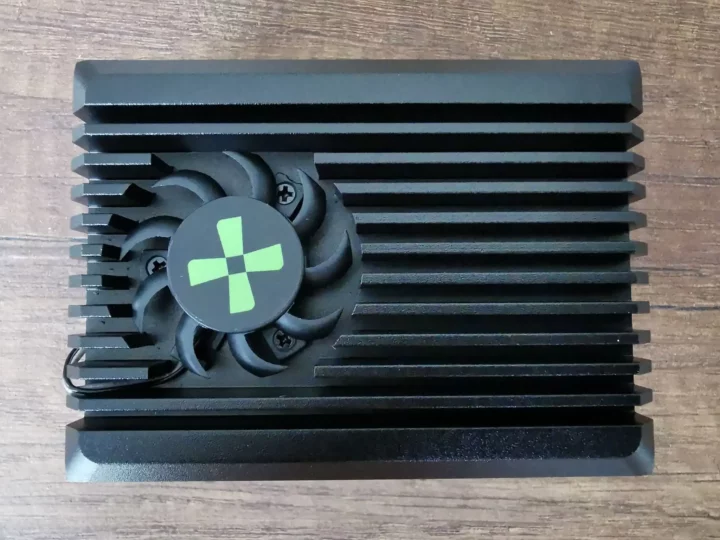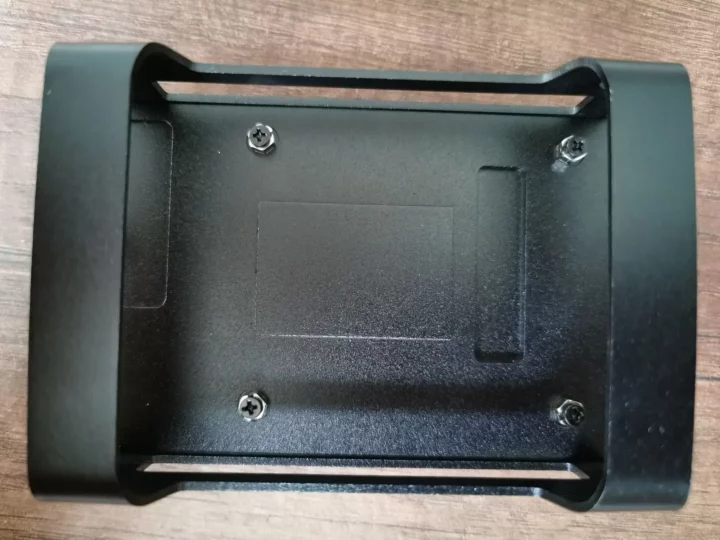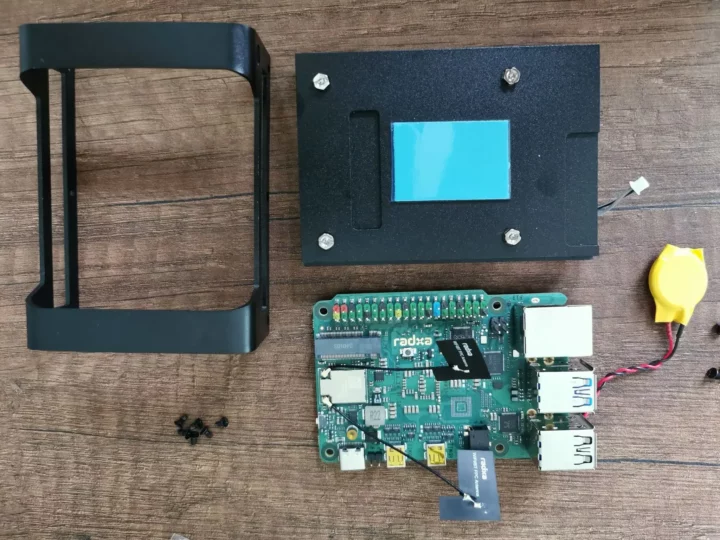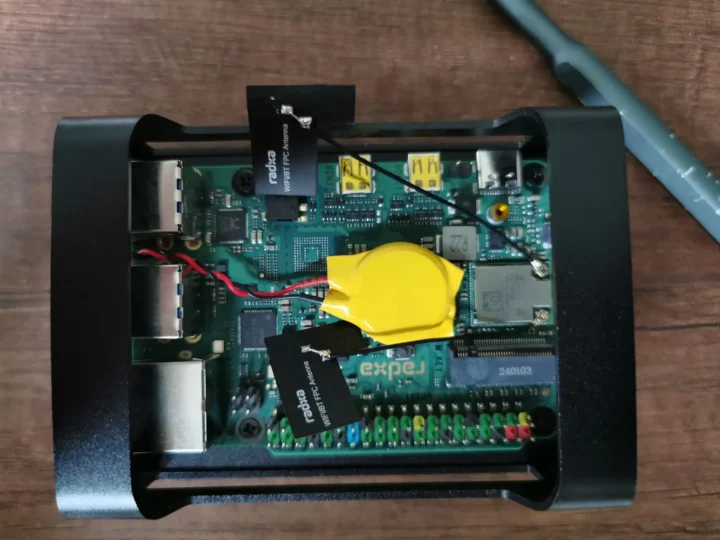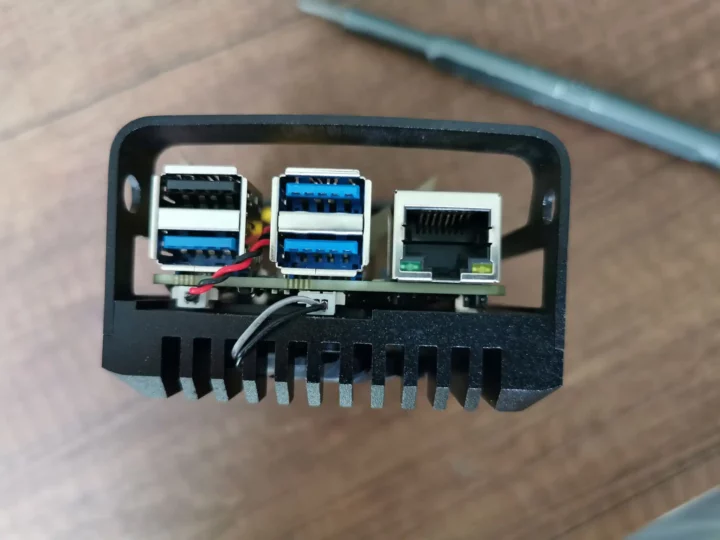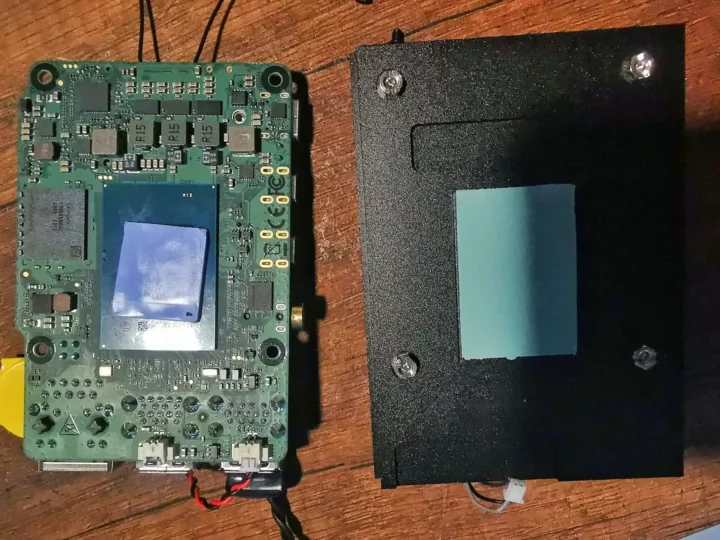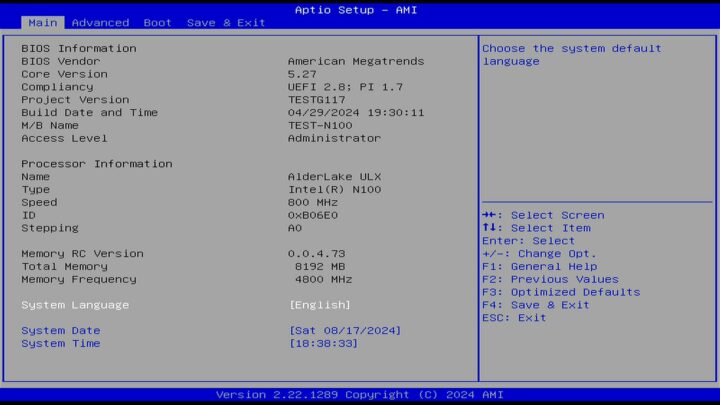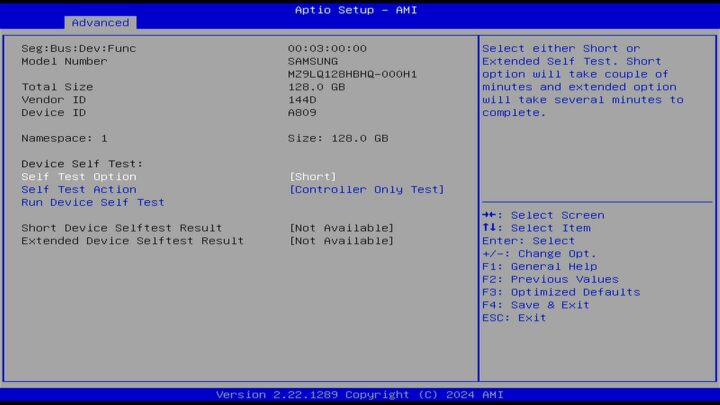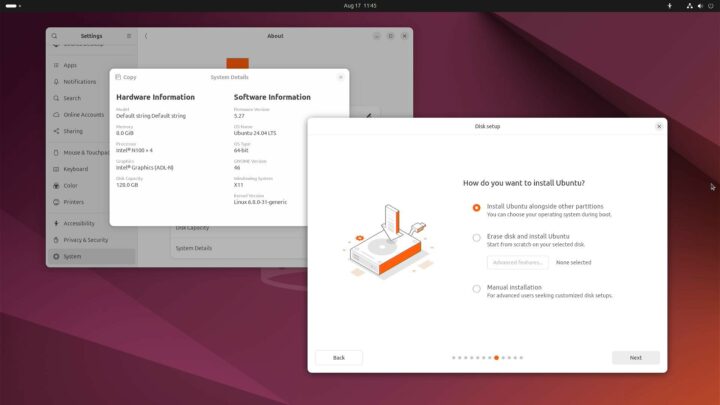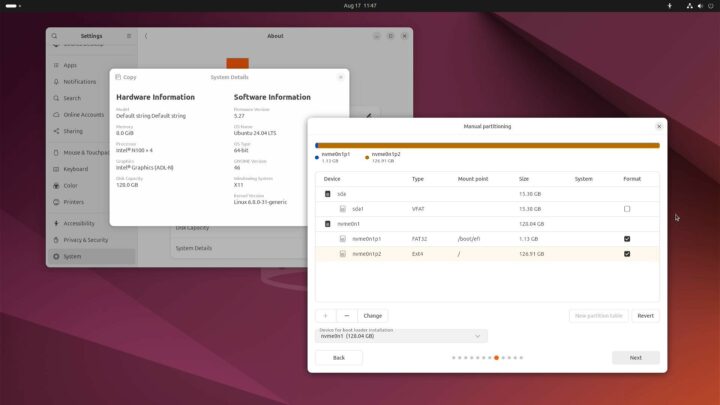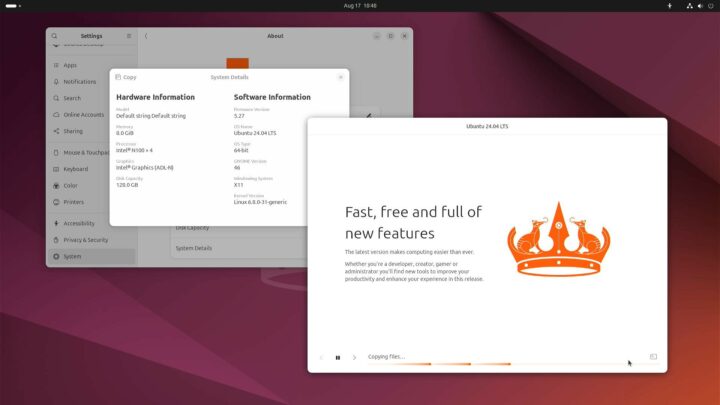The Radxa X4 is a single-board computer that uses an Intel N100 processor instead of an Arm-based SoC found in most SBCs and also embeds a Raspberry Pi RP2040 microcontroller for GPIO control. What’s interesting is that the Radxa X4 is a small computer board with a similar form factor as the Raspberry Pi 5 SBC, but benefits from the higher performance of Intel “Alder Lake-N” Processor N100 CPU and out-of-the-box compatibility with most operating systems, except for specific features such as GPIOs.
The Intel N100 board also comes with a built-in M.2 M-key socket (so no need for an extra HAT) that supports higher speed storage thanks to a PCIe 3.0 x4 interfaces, as well as WiFi 6 connectivity, making the Radxa X4 an interesting option for those looking for a small, capable computer board for home, IoT, or industrial use. The company sent us a full kit with the board, heatsink case, 30W power supply, and 128GB M.2 NVMe SSD, and in the first part of the Radxa X4 review, we will go through an unboxing, assemble the kit, and install Ubuntu 24.04.
Radxa X4 kit unboxing
We got five boxes in the package sent by Radxa for the heatsink case, the Radxa X4 board itself, a USB-C to USB-C cable, a Radxa Power PD 30W power adapter, and an NVMe SSD.
The provided SSD is a tiny Samsung PM991 M.2 2230 NVMe SSD with 128GB capacity (model MZ-9LQ1280).
The kit also includes a “Radxa Power PD 30W” power adapter compatible with the USB PD standard, which can output up to 5V @ 5A, 9V @ 2A, and 12V @ 2.5A. It supports AC input from 100V-240V. It has a clear laser data emission. The adaptor’s legs are foldable, which is great for portability, but be careful when plugging it into the socket because you might accidentally break a leg. The Radxa-branded USB-C to USB-C cable looks of good quality.
A first look at the Radxa X4 board reveals a design similar to the Raspberry Pi 5 with the four USB Type-A ports, the Ethernet port, micro HDMI video outputs, and the USB-C power port placed in the same location as the Pi 5 SBC. However, upon closer inspection, we found extra connectors and features on both sides of the Intel N100 SBC, such as a WiFi 6 module, an M.2 socket for an M.2 2230 NVMe SSD, and an RTC battery.
The bottom side of the board features the Intel N100 CPU which may be more practical for various cooling solutions. We’ll also find a SKhynix H58G66BK8BX067 RAM chip (8GB LPDDR5) and an MPS2105 step-down converter.
Looking more closely at some of the components on the top of the board, we’ll find the Azureware AW-XM548NF WiFi 6 and Bluetooth 5.2 module (Realtek RTL8852BE-based) that we previously found in the GEEKOM Mini Air12 mini PC also powered by an Intel N100 processor.
We can also see a Raspberry Pi RP2040 microcontroller close to the GPIO header, a Realtek ALC269 audio codec close to the 3.5mm audio jack, and an unpopulated eMMC flash footprint. Future versions of the Radxa X4 will come with or without eMMC flash, but our sample does not have built-in storage, so the only options are to boot with a USB drive or an M.2 2230 NVMe SSD.
Radxa X4 heatsink case assembly
The heatsink set with a fan installed on top doubles as a case for the board.
You can loosen the screws to separate the heatsink set and the case frame before assembly, and there’s also a thermal pad for the processor used to further improve cooling. We installed it before taking the photo below.
From there, the assembly is straightforward. First place the Radxa X4 board so that the N100 processor is in contact with the thermal pad, tighten the screws, connect the fan connector, and reassemble the cover.
It is worth noting that when the build is complete, the RTC battery will just hang and touch the desk since we have to turn the case upside down so that the fan faces up. Some dual-sided tape could help.
The cooling fan is also connected through a 2-wire cable, so although the Radxa X4 board can adjust the fan speed, it cannot read the fan speed.
We also found a gap between the thermal pad and the CPU, so we added an extra thermal pad to make sure cooling works in an optimal manner.
You’ll find the Radxa X4 specifications in our previous article, so we won’t reproduce them in this review.
NVMe SSD installation and BIOS
Since the Intel N100 is a standard x86 processor, you can install any operating system like you would on a standard computer. Since there’s no built-in storage, we had to install the NVMe SSD provided with the kit before installation an operating system.
We then connector an HDMI monitor, a USB keyboard, and a USB mouse for a quick test. We pressed the F2 button on the keyboard to enter the BIOS setup page with has some basic information as shown in the picture below.
Interestingly, the Project Version is shown as TESTG117 and the M/B name is TEST-N100, so Radxa may have used the test BIOS from Intel (for some reference design).
We could also confirm the SAMSUNG NVMe SSD was correctly detected in the Advanced section of the BIOS.
We also set the system date/time, and we’ll soon be able to boot the system with a bootable USB drive out selected operating system: Ubuntu 24.04 Desktop 64-bit.
Ubuntu 24.04 installation on Radxa X4
We just downloaded the standard Ubuntu 24.04 Desktop AMD64 ISO from the Ubuntu website, as there’s no need to select a specific image as we would have had to do for an Arm or RISC-V target. After selecting the USB drive in the BIOS we got the desktop and started the installation without issues.
We selected the NVMe SSD as the installation medium for Ubuntu 24.04 since that’s the only option.
The installation process took no time, and we did not encounter any problems during the Ubuntu 24.04 installation on the Radxa X4 board.
We’ll now check some basic system information below.
Ubuntu 24.04 system information
|
1 2 3 4 5 6 7 8 9 10 11 12 13 14 15 16 17 18 19 20 |
unoiot@radxa-x4:~$ cat /etc/lsb-release DISTRIB_ID=Ubuntu DISTRIB_RELEASE=24.04 DISTRIB_CODENAME=noble DISTRIB_DESCRIPTION="Ubuntu 24.04 LTS" unoiot@unoiot-Default-string:~$ uname -a Linux radxa-x4 6.8.0-40-generic #40-Ubuntu SMP PREEMPT_DYNAMIC Fri Jul 5 10:34:03 UTC 2024 x86_64 x86_64 x86_64 GNU/Linux unoiot@radxa-x4:~$ df -h Filesystem Size Used Avail Use% Mounted on tmpfs 772M 2.6M 770M 1% /run /dev/nvme0n1p2 116G 11G 100G 10% / tmpfs 3.8G 12K 3.8G 1% /dev/shm tmpfs 5.0M 8.0K 5.0M 1% /run/lock efivarfs 192K 83K 105K 44% /sys/firmware/efi/efivars /dev/nvme0n1p1 1.1G 6.2M 1.1G 1% /boot/efi tmpfs 772M 148K 772M 1% /run/user/1000 unoiot@radxa-x4:~$ free -m total used free shared buff/cache available Mem: 7716 1326 5416 257 1483 6389 Swap: 4095 0 4095 |
Our system runs Ubuntu 24.04 LTS with Linux 6.8 on a system with a 116GB root file system and about 8GB of RAM of which only 1.3GB is used.
inxi has provided more details:
|
1 2 3 4 5 6 7 8 9 10 11 12 13 14 15 16 17 18 19 20 21 22 23 24 25 26 27 28 29 30 31 32 33 34 35 36 37 38 39 40 41 42 43 |
unoiot@radxa-x4:~$ sudo inxi -Fc0 [sudo] password for unoiot: System: Host: radxa-x4 Kernel: 6.8.0-40-generic arch: x86_64 bits: 64 Console: pty pts/1 Distro: Ubuntu 24.04 LTS (Noble Numbat) Machine: Type: Desktop Mobo: N/A model: N/A serial: N/A UEFI: American Megatrends LLC. v: 5.27 date: 04/29/2024 CPU: Info: quad core model: Intel N100 bits: 64 type: MCP cache: L2: 2 MiB Speed (MHz): avg: 718 min/max: 700/3400 cores: 1: 774 2: 700 3: 700 4: 700 Graphics: Device-1: Intel Alder Lake-N [UHD Graphics] driver: i915 v: kernel Display: server: X.org v: 1.21.1.11 with: Xwayland v: 23.2.6 driver: gpu: i915 tty: 120x30 resolution: 2560x1080 API: EGL v: 1.5 drivers: iris,swrast platforms: surfaceless,device API: OpenGL v: 4.6 compat-v: 4.5 vendor: mesa v: 24.0.9-0ubuntu0.1 note: console (EGL sourced) renderer: Mesa Intel Graphics (ADL-N), llvmpipe (LLVM 17.0.6 256 bits) Audio: Device-1: Intel Alder Lake-N PCH High Definition Audio driver: snd_hda_intel API: ALSA v: k6.8.0-40-generic status: kernel-api Network: Device-1: Realtek RTL8852BE PCIe 802.11ax Wireless Network driver: rtw89_8852be IF: wlp1s0 state: up mac: a8:41:f4:bc:3f:40 Device-2: Intel Ethernet I226-V driver: igc IF: enp2s0 state: down mac: 10:02:b5:86:00:0b Bluetooth: Device-1: IMC Networks Bluetooth Radio driver: btusb type: USB Report: hciconfig ID: hci0 state: up address: A8:41:F4:BC:3F:41 bt-v: 5.3 Drives: Local Storage: total: 119.24 GiB used: 10.52 GiB (8.8%) ID-1: /dev/nvme0n1 vendor: Samsung model: MZ9LQ128HBHQ-000H1 size: 119.24 GiB Partition: ID-1: / size: 115.78 GiB used: 10.52 GiB (9.1%) fs: ext4 dev: /dev/nvme0n1p2 ID-2: /boot/efi size: 1.05 GiB used: 6.1 MiB (0.6%) fs: vfat dev: /dev/nvme0n1p1 Swap: ID-1: swap-1 type: file size: 4 GiB used: 0 KiB (0.0%) file: /swap.img Sensors: System Temperatures: cpu: 44.0 C mobo: N/A Fan Speeds (rpm): N/A Info: Memory: total: 8 GiB available: 7.54 GiB used: 2.53 GiB (33.6%) igpu: 60 MiB Processes: 245 Uptime: 37m Init: systemd target: graphical (5) Shell: Sudo inxi: 3.3.34 |
Everything is properly detected and the CPU idles at just 44°C. That’s a good sign about the cooling ability of the heatsink case, but we’ll do further testing under stress in the second part of the Radxa X4 review.
Summary of tests so far
The Radxa X4 is an x86 single board computer with a form factor that is similar to the Raspberry Pi 5 and suitable for home usage, IoT, edge computing. smart kiosks, and so on mostly because it can support a range of operating systems out-of-the-box.
We also expect new versions to come out soon based on Amstom Lake that should be suitable for a wider industrial operating temperature range. Testing the 40-pin GPIO header will be interesting too, but based on the documentation, it should be like having a Raspberry Pi Pico connected to the computer through USB and UART.
We would like to thank Radxa for sending the X4 SBC and accessories for review. The Radxa X4 is currently out of stock on AliExpress, but it can be purchased on Arace for $80 and up, and we can also see some models with 64GB or 128GB eMMC flash. In the second part of the review, we plan to compare the Radxa X4 to the Raspberry Pi 5 in terms of features and performance in a way similar to what we did when comparing the Raspberry Pi 5 to Intel N100 mini PCs, but this time it will include testing the GPIO header as well.
Continue reading: Radxa X4 review – An Intel N100 alternative to Raspberry Pi 5 tested with Ubuntu 24.04.
CNXSoft: This article is a translation – with additional insights – of the review on CNX Software Thailand by Arnon Thongtem and edited by Suthinee Kerdkaew.

Jean-Luc started CNX Software in 2010 as a part-time endeavor, before quitting his job as a software engineering manager, and starting to write daily news, and reviews full time later in 2011.
Support CNX Software! Donate via cryptocurrencies, become a Patron on Patreon, or purchase goods on Amazon or Aliexpress


